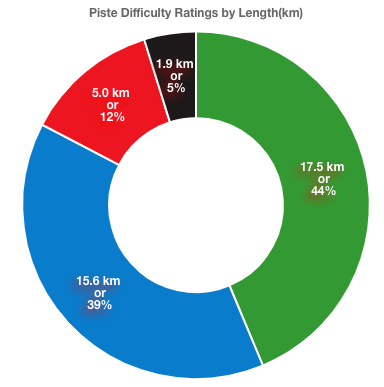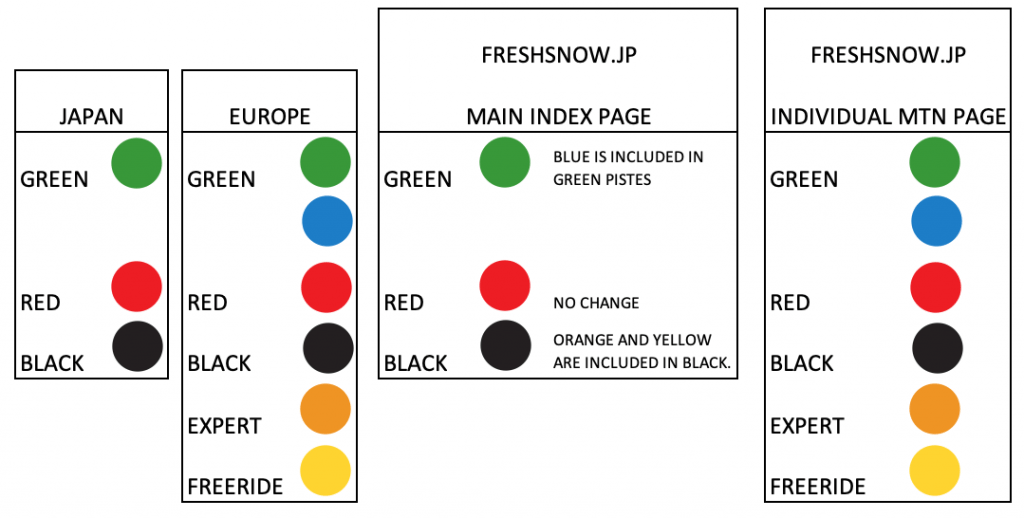Japanese Ski Run Difficulty Ratings are unique and different from other countries. Unlike anywhere else in the world of skiing or snowboarding, and according to wikipedia.org, Japan has a very simple ski run difficulty rating ratings system. Generally, we categorize slopes to the right into the following groups: beginner, intermediate, and expert. Furthermore, there is no agreed definition of each difficulty. In other words, the three difficulties are relative to one another at each resort. By and large, you should expect them to be similar, but there is no guarantee that they will be—caution is necessary..


In Openstreetmap.org (OSM), where in part freshsnow.jp gets its data, it seems the convention is slightly different for Japan data though. OSM uses 6 categories: novice, easy, intermediate, advanced, expert, and freeride, along with numerous unrated pistes (e.g., no data provided), similar to Europe. In fact, here is the difficulty matrix utilized in Europe:
Not all resorts in Japan use all categories. While some mountains follow the Japan standard, other mountains do not. The pie chart belowan example of the piste ratings for Zao Onsen ski mountain, one of Japan’s largest ski resorts. Because the data is so variable in Japan, freshsnow has decided to group all difficulty levels in to just 3 categories. The three categories are; green (beginners), red (intermediate) and black (expert).

On the main index screen, located here, freshsnow.jp reduces the 6 category to just three. On the individual mountain pages, such as Niseko, categories are broken down into 6 groups..
